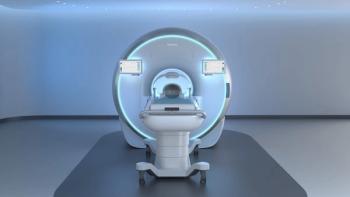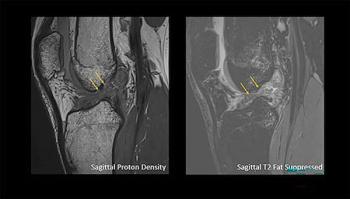
Israel showcases tomorrow’s imaging tools
Delegates caught a glimpse of the future of radiological technology at Sunday’s “ESR meets Israel” session.Israel may be relatively a small nation, with a population of just seven million, but it is making important contributions to innovation. About 900 companies are developing new pharmaceuticals, medical devices, and healthcare IT products. The majority of these businesses are relatively young and are supported by venture capital funding.
Delegates caught a glimpse of the future of radiological technology at Sunday's "ESR meets Israel" session.
Israel may be relatively a small nation, with a population of just seven million, but it is making important contributions to innovation. About 900 companies are developing new pharmaceuticals, medical devices, and healthcare IT products. The majority of these businesses are relatively young and are supported by venture capital funding.
"As a nation, Israelis have a strong entrepreneurial spirit," said Dr. Yael Inbar, a radiologist at the Sheba Medical Center in Tel-Hashomer, Israel.
As evidence of this activity, Inbar showed how Israeli-grown technology could find a place in operating rooms of the future. One such innovation is a 0.12T MRI system that may be used for intraoperative imaging. The compact C-arm scanner has been designed to provide neurosurgeons with high-quality 3D images of the brain. It offers near-real-time control over navigation and resection, and has been optimised for use in any conventional neurosurgical operating suite. Images acquired with this system in the operating theater may prevent surgery from being halted prematurely.
Inbar also introduced delegates to an ultrahigh-resolution cryosurgical device, which has been approved by the U.S. Food and Drug Administration for the treatment of prostate and liver cancers. The system uses 1.5-mm needle probes to freeze localised tissue. Cryoablation may also be carried out under MR guidance with slightly larger (2 to 3 mm), MR-compatible probes.
"This system came from technology developed by the military that was used to cool missiles," she said.
Another Israeli-grown innovation for radiology is the EndoScout tracking system. This technology works with the gradient fields of MRI scanners. It is easily installed and requires no preregistration, Inbar said. Possible applications for this tool include radiofrequency ablation in the liver, spinal cyst drainage, brain biopsy, breast biopsy, and kidney cryotherapy.
Inbar concluded her presentation by discussing an MR-guided focused ultrasound device. "The idea of using ultrasound to heat and ablate tissue is not particularly new. The novelty is its combination with MRI," she said.
Three-D images enable the target lesion to be located precisely. Visualisation of the beam path means that treatment can be controlled. Real-time temperature feedback is possible through MR thermometry. The success - or otherwise - of ablation may then be determined from a post-therapy contrast-enhanced MRI scan.
The most common use for this system is the treatment of symptomatic uterine fibroids, Inbar said.
Newsletter
Stay at the forefront of radiology with the Diagnostic Imaging newsletter, delivering the latest news, clinical insights, and imaging advancements for today’s radiologists.




























